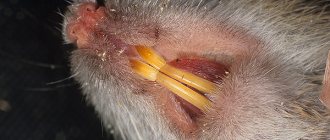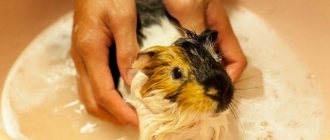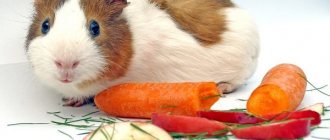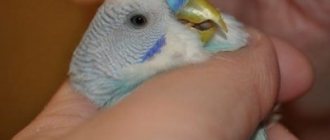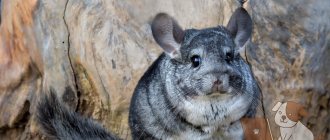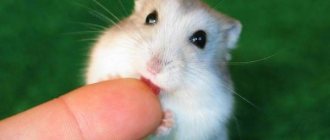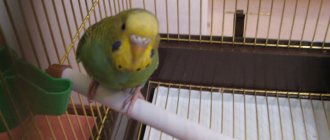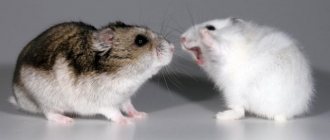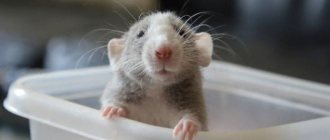June 21, 2021
In Russia, almost ten regions have introduced mandatory vaccination for certain categories of citizens who come into contact with a large number of people. Vaccinations were required for residents of Moscow, the Moscow region, Kuzbass, Tver, Tula, and Sakhalin regions. Anyone who wants to get vaccinated against coronavirus can choose from three Russian drugs: Sputnik V, EpiVacCorona or CoviVac.
“AiF-Novosibirsk” figured out how vaccines differ, what contraindications they have and their principle of action.
Care and maintenance
Guinea pigs will need a comfortable and safe home, equipment and quality food.
Cage and filler
The animal can be kept in a cage, terrarium or enclosure. The main requirements for a guinea pig's home:
- availability of free space;
- design safety;
- good ventilation;
- ease of cleaning.
An aquarium or closed plastic cage is not a suitable option. There is poor air circulation in them. Some stores sell guinea pig racks. These are multi-tiered open-type structures with plastic pallets. They are somewhat reminiscent of a shop window. The floors are connected to each other by steps or gentle stairs with notches.
Such a dwelling does not take up much space in the apartment and is well ventilated. In addition, rodents living in these structures are constantly in sight of the owners, making it easy to observe them. The rack is easy to clean since the top is open.
A house for a guinea pig is placed in the cage. Each rodent should have its own shelter. It is quite large - approximately 35 cm in length, 20 cm in width and 7-10 cm in height. An adult animal must fit freely inside.
In addition, you will need a hay barn, 2 feeders and a drinking bowl. It is worth giving preference to the nipple one, since pets will not be able to knock it over, which means they will not be left without water.
Filler is used as bedding. Its function is to absorb moisture and eliminate unpleasant odors. For rodents, hardwood shavings or compressed sawdust are suitable.
Hygiene
Caring for a common guinea pig includes cleaning the cage, brushing the fur, and trimming the nails. Inexperienced owners believe that rodents need to be bathed when they smell unpleasant. In fact, the animal washes its coat on its own. If an unpleasant odor appears, it means you need to change the filler in the cage more often. Guinea pigs are bathed in exceptional cases when it is impossible to remove dirt on the fur by other means.
The animal's home is cleaned every 4-7 days. The more pets live there, the faster the litter gets dirty. The dirty filler is thrown away and the tray is washed with hot water. Cleaning products must not be used.
It is necessary to periodically examine the animal's ears.
If a lot of sulfur has accumulated in them, it is carefully removed with a cotton swab or disk. Nails are shortened once a month
Only the very tip is cut off with a special nail cutter.
It is imperative to monitor the condition of the fecal pouch in males. Sometimes shavings and other debris get into it, and droppings also accumulate. All this can lead to skin irritation and cause inflammation.
Taming
When the animal gets used to its new place of residence, you can begin to accustom it to your hands. The main thing in this matter is patience, there is no need to rush. First, the pig must get used to the owner's voice.
You need to approach the cage several times a day and talk affectionately to your pet. It is advisable to call him by name. Communication with a person should be associated with something pleasant, so you should treat the rodent with a piece of apple or carrot every time.
Then you can move on to the next stage - hand feeding. When the guinea pig stops being afraid, he will come closer and take the treat right from the palm of his hand.
It is important not to make sudden movements so as not to scare her. Gradually the animal will get used to the smell of the owner’s hands, and then it can be taken on your lap
lice eaters
Lice eaters and other visible parasites appear from contact with other pigs; infection is possible through hay, sawdust, unsealed food from a pet store that sells infected animals, etc. Lice eaters are not dangerous to humans.
Symptoms: itching is possible (but not always), small worms about 1 mm long are found in the fur, they look yellowish on black wool, darkish on white.
- Sprays for cats and rodents are suitable, for example, 8in1 spray, Acaromectin, Bars spray for cats, Bolfo spray, Celandine spray, etc. Breeders use Frontline for cats and dogs, but, for example, Frontline is toxic for rabbits. Therefore, there are conflicting opinions about it, especially judging by foreign forums and articles that prohibit the use of fipronil-based drugs on rabbits and rodents.
- You can buy a spray against lice and nits at a pharmacy. The same active ingredient is used as in sprays against lice for animals - permethrin.
- The best option is Stronghold drops for kittens or Advocate. You need 1 pipette, not a whole box. Dosage is strictly based on weight. Stronghold – 6 mg selamectin per 1 kg of animal weight, which corresponds to 0.1 ml/kg for 6% solutions and 0.05 ml/kg for 12%. Advocate – 0.1 ml per 1 kg of pig.
It is better to use drops : you need to spray the entire pig with sprays (spraying the drug all over the body is unsafe - the animal can lick itself when washing), and drop the drops on the withers or on the bald patch behind the ear and release the clean pig. Read the instructions carefully before using any product (otherwise, you may poison the animal). Pay attention to the dosage, the number of sprays.
Be sure to wash the cage and all its accessories, change the bedding, food and hay.
The number of treatments depends on whether, in addition to lice eaters, there are also nits. If parasite eggs are also attached to the hairs, then a single treatment will not be enough. It will need to be repeated after 14 days (since permethrin and other insecticides only affect adults, but not their eggs).
Important. Never use Neostamazan, Ethnomazan, Stomazan, Butox to treat pigs. Unfortunately, many veterinarians unknowingly prescribe them. It is used ONLY to treat surfaces, not living creatures. Animals often die from these drugs. Initially, they were used for cattle, against ectoparasites. Why this product was even introduced into our pet stores for decoration is unclear. And the instructions clearly state that it is used for livestock, cats, and dogs. There is no talk of any smaller and/or exotic animals there. Quotes from owners whose animals have experienced the sad consequences of this drug:
What not to give to guinea pigs
The guinea pig is a herbivore. It has a long digestive tract, which is designed to digest coarse fibers. Therefore, the basis of his diet - 75% - should be plant foods, namely hay and grass. In addition, your pet’s menu should include plenty of fresh vegetables, fruits, berries, and granular food.
Since the body of this animal cannot independently produce vitamin C, which is very important for its normal functioning, this element must be supplied with food, namely with succulent food. However, not all vegetables and fruits are beneficial for the animal. Some of them can be given in small doses, many should never end up in your pet’s feeder.
Forbidden vegetables
There are few vegetables that should not be given to guinea pigs. Most of them can be included in the diet daily. Some are allowed to be fed, but in limited quantities. Cabbage, both white and cauliflower, is undesirable in a pig's feeder. It leads to bloating, upset, pain and discomfort in the abdomen.
Vegetables allowed for consumption should be given to the guinea pig only fresh. The maximum allowable amount per day is 200 g.
The list of vegetables that are allowed and prohibited for consumption by furry rodents can be found in the table:
| Can |
Can be done occasionally and in small quantities
It is forbidden
Cucumber, carrots, zucchini, pumpkin, turnips, celery (root), beets Tomato, bell pepper, avocado, Jerusalem artichoke, rutabaga, artichoke, cabbage Potatoes, onions, garlic, radishes, radishes, horseradish, legumes, corn
Berries and fruits
Fruits and berries are not recommended for the daily diet. They can be fed to the animal 2-3 times a week. They are a source of fiber. Among the fruits, there are some that are desirable in the pig’s menu and are prohibited. All berries can be consumed, but some are rare.
| Can |
Can be done occasionally and in small quantities
It is forbidden
Apples, pears, plums, grapes (except seeds), raspberries, strawberries, blueberries, cherries, sweet cherries, currants Apricots, bananas, melon, oranges, tangerines, watermelons, peaches, pineapples, kiwi, blackberries, rowan, cranberries, gooseberries, sea buckthorn Lemons, grapefruit, pomegranate, persimmons, dates
Animal products
There should be no animal products in the feeding of guinea pigs. Not only do they not need them, but they also pose a health risk. Thus, dairy products and cheese contain lactose, and rodents lack the enzyme that is responsible for digesting them. Therefore, once in the animal’s gastrointestinal tract, “milk” will lead to gas formation and diarrhea, which will cause considerable discomfort not only to the pet itself, but also to its owner.
Of course, there is no need for rodents to eat meat. It has no use in their diet. The digestive tract will not be able to digest this heavy product. The ban also applies to eggs.
Indoor flowers and herbs
Despite the fact that pigs are herbivores, they cannot be fed any indoor crops. Of the plants, the menu can only include meadow and garden greens. Most indoor ornamental crops contain substances that are toxic to animals. If they are consumed, severe poisoning may develop.
If we talk about meadow and garden herbs, sorrel, the ground part of onions and garlic, celandine, fern, sow thistle, wild rosemary, lavender, and serpentine are prohibited. These plants are poisonous to pigs. If you want to feed your pet green grass, then you should prefer carrot and beet tops, dill, plantain, clover, sage, chamomile, burdock, nettle, and echinacea.
Other contraindicated products
A domestic rodent should not be given food from the common table, for example, leftovers from consumed dishes. Fried, canned, salted, baked, boiled foods are strictly prohibited, even if vegetables, fruits and berries are prepared using one of these methods. Do not give foods with spices or just seasonings.
There is no place in your pet's feeder for anything that contains sugar - chocolate, sweets, cookies, etc. Even a small dose that enters the pig's body will provoke a spike in blood sugar, and if given frequently, this increases the risk of developing diabetes. diabetes Bakery products are not needed in the diet of rodents. The digestive tract will not be able to digest them.
Worms
All antiparasitic drugs are toxic. Worms in pigs can be seen in the feces with the naked eye. If they are not visible, then idling weed will only weaken the body, and will also lower the immune system and have a bad effect on the liver.
How to treat: Dirofen paste, Shustrik for rodents, Prazicide suspension for kittens are suitable. Use according to instructions, calculate dosage by weight!
Worms and other endoparasites are poisoned based on their presence (based on the results of tests in a veterinary clinic or veterinary laboratory). Don’t be lazy to submit fresh feces (preferably straight from mumps) for analysis. Contrary to the opinion of “experts,” there are no preventive measures.
A recent study (Kaulfß 2010) on preventive baiting of intestinal parasites in sheep (herbivores) showed that parasites develop resistance to anthelmintic drugs if it is used:
– without making a diagnosis – very often (every 6 months or more often) – in a low dosage – always the same active substance – without monitoring the success of baiting parasites
If at least a couple of worms survive baiting with the drug, they develop resistance to it. Moreover, these new qualities are passed on to the next generation of worms. Since there are no studies on rabbits and pigs yet, experts on these animals advise sticking to data on the behavior of parasites in other herbivores.
PIGS ARE NOT VACCINED.
Guinea pigs do not need vaccination, they do not suffer from viral and other diseases, like, for example, rabbits and other rodents. Pigs are treated externally with drops and a suspension against endo- and ectoparasites.
As an example, I give a veterinary certificate for a guinea pig f. 4, which states that pigs are not vaccinated.
Source
Guinea pig hygiene
Pigs in the wild are capable of keeping their bodies and their homes clean. But at home, to maintain cleanliness, they need the help of the owner.
Pigs need hygiene procedures almost the same as people. By following the rules of care, the animal will be clean, tidy and feel good.
Water treatments
Bathing is not the most pleasant procedure for these animals. And you should not often resort to water procedures. But if the pet got very dirty during a walk, or the animal had diarrhea, then it is necessary to bathe the animal. He cannot cope with this problem on his own.
For bathing, use baby shampoo. The water temperature should be less than 38 degrees. It is not necessary to bathe the whole animal if only one of its paws is dirty. You can't get the pig's head wet. Immediately after bathing, the wet animal is wrapped in a thick towel.
Combing and massage
Long-haired breeds such as angora, sheltie, alpaca, and coronet require brushing. The length of their hair reaches 20 cm. They will not be able to cope with their hair on their own. Comb this coat with a brush or a special comb several times a week. Before starting the procedure, it is recommended to wet the fur to make it easier to comb. This procedure will prevent the formation of tangles and make the fur silky. And if a tangle does form, it must be removed with scissors.
Smooth-haired and hairless guinea pigs can handle their own hairstyles, however, it is advisable to scratch them too. This should be done during the molting period and just for massage. Bald breeds include Skinny and Baldwin.
Some breeds have areas on their body where the hair grows in a circle. Such circular patterns are called rosettes. Rosette guinea pigs look cute, as if disheveled, and are prized by breeders.
Nail trimming
In nature, pigs grind their claws down on stones on their own. But this material is not common in cages and apartments. You can put a few rocks in your pet's cage or even put up a small, stable rock slide, but this still won't eliminate the need to give your pet a manicure. If the claws are not trimmed, they grow huge and begin to curl. It becomes uncomfortable for the pet to walk, its fragile skeleton becomes deformed, and dirt accumulates in the overgrown claws and bacteria develop. And this is not the whole list of problems that arise if you do not deal with the animal’s claws.
Nails are cut with a special nail clipper, which is sold in pet stores. You can also use tweezers and nail scissors. When cutting, you need to be careful, as there is a nerve and a vessel in the animal’s nail
And it is important to correctly determine its location. In transparent nails this issue does not cause difficulties; the vessel and nerve are clearly visible. But with dark nails you will have to work slowly, gradually trimming the nails to the required level
But with dark nails you will have to work slowly, gradually trimming the nails to the required level.
Pets' nails are cut every 2 weeks or once a month. If you skip procedures and let your nails grow, then the nerve in the claw will also grow back. This means that cutting your nails short will become more and more difficult each time.
Grinding down teeth
Nature provides that the front teeth of pigs should be ground down. Solid dry food, grains, and tree branches are suitable for this. If the teeth are not going to shrink, then this will interfere with the pet’s ability to eat. In this case, only a veterinarian will help. You need to contact him about this problem once every three months.
Eye check
You should check your eyes regularly for swelling, redness, or discharge. These symptoms may simply be caused by dirt or the result of a serious illness. If this situation happens for the first time, then you need to wipe your eye with a napkin. After this, the animal needs to be observed. Monitor the condition of the eyes and, in general, his mood and health. If the situation with the eyes has not changed for a long time or has worsened, then it is time to visit the veterinarian.
Ear hygiene
Dirty ears in guinea pigs can cause deafness. Therefore, animals’ ears need to be cleaned regularly. The ears are a favorite place for ear mites.
The ear cleaning procedure should be carried out using a paper handkerchief. You cannot use cotton swabs for this.
In addition to cleaning, it is worth noting if your pet is scratching its ears or tilting its head to the side, as if something is bothering it. Then this is a reason to visit the veterinarian.
You need to take care of your guinea pig regularly, but once all the rituals become a habit, care will be quick and easy.
Respiratory diseases
Respiratory problems can arise as a result of hypothermia in the animal.
Signs:
- the animal looks depressed, weak;
- slow reaction to external actions;
- weak appetite;
- labored breathing;
- the animal drinks a lot of fluids;
- lies a lot, does not react to people and surroundings.
Many diseases are accompanied by changes in body temperature. How to measure a guinea pig's body temperature? This is not difficult: you need to take a thermometer, lubricate its tip with Vaseline, then lightly press the animal’s groin area with the fingers of one hand, and carefully insert the thermometer into the pet’s rectum with the other hand. It is more convenient and preferable to do this using a special thermometer for animals.
First meeting
If you place two unfamiliar animals in the same dwelling, a ritual of acquaintance and establishment of rank will take place between them. In this ritual, sniffing and trying to jump on each other's backs are standard actions. Guinea pigs chatter their teeth and try to jump on each other. You should not create obstacles to their acquaintance. All that is required from the animal owner is patience.
Establishing a rank often lasts several days, after which the animals behave peacefully.
Due to the fact that pigs also have their own personalities and dislikes, before purchasing a new pet, you need to carefully consider whether it suits your group.
Expert advice: before placing a new animal in a cage with a group, you need to rub the back of its body with the litter that is already in the cage in which you want to place it. As a rule, after this the animals accept the newcomer as one of their own. This method helps when meeting for the first time in a neutral area.
During this period, the cage should be washed and filled with the necessary accessories. It is necessary to make a small rearrangement of the animals' housing. Housing for the group must accommodate a house for each pig. In the first few weeks, food should be scattered throughout the cage to eliminate possible conflicts between pets.
If the breeder sees that rodents are fighting, the following measures must be taken:
- Knock loudly near the cage. An unexpected sharp sound distracts the animals.
- Spray warm water on the animals.
- Try to separate them manually using rough gloves.
- The conflict is over. Now, for some time, the pigs need to be moved to different rooms. And start getting to know each other again.
Based on all of the above, we can conclude:
The male needs to be castrated. This will help dull the animal's protective instincts. The process of sterilization of females is more complicated. It is recommended to purchase pigs while they are still young. For example, take a young animal of the same sex as an adult animal. It is worth raising two animals together from an early age, this way you will eliminate the incompatibility of animals. Guinea pig is a small but strong animal
If the animal is angry, you must handle it carefully so as not to get a scratch. The animal can be aggressive; during a fight, it can bite through the skin of another pig.
You should not place an unsterilized male with a female. These animals reproduce quickly.
Vaccination schedule
Today, vaccination against measles, rubella, mumps, according to the National Vaccination Calendar, is given to all children who do not have contraindications to vaccination. In healthy children, the first vaccination is given at the age of one year, then before entering school, revaccination is performed at the age of 6-7 years.
If at the time of vaccination a child has a cold, an exacerbation of a chronic disease, or there are other contraindications determined by the doctor, immunization can be carried out according to an individual schedule, with preliminary preparation for vaccination and compliance with the timing between administration of the drug. Parents, due to various circumstances, can refuse vaccination or reschedule vaccination by writing a corresponding statement to the doctor.
Today, complex vaccines containing three components are used - one injection against three infections at once.
Characteristics of a guinea pig: advantages and disadvantages
| How long does a guinea pig live? | On average from 5 to 8 years. There are long-livers who live up to 15 years. But this is very rare. Lifespan depends on housing conditions and nutrition. |
| Is it possible to teach a rodent different tricks? | The ability to train is there, but it is difficult to teach. You can teach simple tricks: spin around your axis, stand on your hind legs to beg for food, etc. |
| What size should a guinea pig cage be? | The animal needs a spacious cage or terrarium. The minimum cage floor size for keeping one individual is 30x60 cm. The larger the territory, the more comfortable the kevi live. |
| What does a guinea pig get sick with? | The most common diseases:
|
| What is the price of the animal? | From 500 to 10 thousand rubles, depending on the breed. The most expensive are the hairless Guinea pigs - Skinny (from $80), Baldwin (from $120). |
| Does pig stink? | With proper care, your pet will not smell. |
| What should you not feed this animal? |
|
| What is the best way to transport caves? | A special plastic container, terrarium or regular carrier for cats or small breed dogs will do. In cold weather, it is necessary to insulate the carrier with a heating pad with warm but not hot water, a layer of hay or an old woolen item. |
| Which drinking bowl and feeder is better to buy? | There should be two feeders - for green food and for dry food. Choose stable bowls, preferably ceramic ones, so that the animal cannot turn them over. Vertical nipple drinkers are very convenient for small rodents. The volume of the drinking bowl is at least 250 ml per individual. It is better to use filtered or special bottled water. It must be changed daily, even if the pet does not have time to drink everything. |
| Which litter to choose for your pet? | The best option is granulated or regular sawdust, poured onto the bottom of the cage in an even layer of 4–6 cm. The filler is replaced weekly. You can buy it at a pet store or make it yourself. Granular filler absorbs better than regular sawdust. |
| Does a rodent need vaccinations? | No, pigs are not vaccinated. They are given prophylaxis against external and internal parasites. |
| How to choose the right guinea pig? | It is necessary to choose a moderately well-fed individual with shiny fur and eyes, with a good appetite, at the age of 4 - 5 weeks. The rodent should not have bald spots, scabs or peeling skin, dirty or matted hair in the anal area, or discharge from the eyes or nose. When the pig is picked up, it should not struggle or squeal. It is better to purchase a pet from a breeder with a good reputation. |
Pros of keeping caves:
- Ideal pets for children, do not take up much space.
- They quickly get used to a nickname or conventional call (whistle).
- Non-aggressive (biting individuals are almost never found).
- Indifferent towards other animals.
- They are unpretentious in food, do not need walks and physical activity.
- They are considered the most hypoallergenic pet.
Difficulties of maintenance and care:
- They are difficult to train, but some tricks can be taught.
- They can be intrusive - they beg for food and affection.
- Noisy - they make many different sounds: whistling, squealing, squeaking, grumbling, grunting (each sound has its own meaning).
- They are very active, so they scatter hay, droppings and sawdust around the cage.
- They chew furniture, wires and other things.
- While walking outside the cage, they may relieve themselves on the carpet or floor.
- They mark their territory with urine and secretions from their glands.
- They are afraid of cold and overheating and catch cold easily.
- They do not tolerate loneliness well, so a companion is required.
- They are shy, so they take a long time to get used to people.
Etiology of diseases
All three infections are viral in nature and affect the respiratory system and immune system. In severe cases and complications, internal organs, vision, the reproductive system (with mumps) and the nervous system can be damaged.
- Measles is characterized by a combination of eye and respiratory tract lesions and skin rashes. First manifestations:
- small white spots on the cheeks and gums (Koplik's sign);
- redness of the eyes;
- snot, nasal congestion;
- dry strong cough;
- heat;
- a pinpoint red rash that appears from the top of the head to the heels. Source: I.L. Solovyova, E.A. Alexandrova, E.M. Lezhen, O.V. Anosova, A.A. Solovyeva Vaccinal prevention of measles and mumps in children in modern conditions // Ulyanovsk Journal of Medical Biology, 2013, No. 4, pp. 47-53
Without treatment, measles is dangerous for the development of purulent otitis, bronchitis and pneumonia, as well as the formation of encephalitis.
- Mumps is a lesion of glandular tissue and respiratory organs. Typical for him are:
- runny nose;
- temperature increase;
- severe malaise with headache;
- muscle aches;
- pain in the masticatory muscles when swallowing;
- inflammation of the salivary glands with swelling behind the ears and along the edge of the lower jaw;
- dry mouth, decreased appetite, severe thirst.
With complications of mumps, inflammation of the appendages (in girls) and testicles (in boys) may develop, followed by infertility, as well as deafness, and the development of meningitis.
- Rubella is milder and is characterized :
- moderate temperature;
- redness of the eyes;
- the appearance of a rash on the skin;
- enlarged lymph nodes in the back of the head and neck;
- joint damage.
Rubella is especially dangerous for children and can lead to bronchitis and otitis media. For pregnant women, there is a risk of fetal defects. In rare cases, children may have bronchitis, otitis media or pneumonia.
Duration and lifestyle
Wild guinea pigs live about 4-5 years. This is due to the influence of various negative factors, such as disease, malnutrition. Many rodents die early because they become victims of predators. Pets can live 3-4 years longer.
Guinea pigs living in the wild are mostly awake at night. During the day they hide in shelters to avoid becoming prey to predatory animals. These rodents rarely dig minks. They prefer to use rock crevices, tree hollows, and abandoned nests of other animals as homes. Some species build something similar to nests in thickets of plants.
Guinea pigs in the wild live in small groups of 10-12 individuals. It is led by the strongest male. He is responsible for the safety of the family and fertilizes the females. As the flock grows, males begin to fight for dominance. Weaker males leave the group.
Each flock of guinea pigs is assigned its own territory, access to which is prohibited to outsiders. Females have different responsibilities - those who have recently given birth take care of the cubs, others look for food.
Guinea pigs make different sounds when communicating with each other:
- rodents warn of danger with a shrill squeak;
- the animals express pleasure by quiet purring and grunting;
- Growling is a sign of aggression.
There are rarely conflicts in the pack (with the exception of the struggle for leadership between males).
In the wild, pigs have to defend themselves from numerous enemies, so they are very careful and timid. In case of danger, rodents can not only run fast, but also swim. They also deftly climb rocky cliffs and tree trunks.
Guinea pigs are also very clean. They spend most of their free time cleaning their fur and grooming themselves. Grooming their fur helps them get rid of their own scent so they can remain undetected by predators.
This page does not exist!
Infectious diseases clinic services
Diagnosis, prevention and treatment
Fibroelastometry and ultrasound diagnostics of the mammary glands, thyroid gland, scrotum, abdominal cavity
Biochemistry. Blood test: general, clinical. Tests for vitamins, microelements and electrolytes. Analysis for HIV infection, viral hepatitis, bacteria, fungi and parasites
The most accurate determination of the severity of liver fibrosis using a non-invasive method using the FibroScan 502 TOUCH device
The gynecologist at H-Clinic solves a wide range of problems in the field of women's health. This is a specialist you can completely trust
Dermatovenereology at H-Clinic is the most modern and effective algorithms for the diagnosis and treatment of sexually transmitted diseases, fungal and viral infections, as well as the removal of benign nevi, warts, condylomas and papillomas
The possibilities of vaccine prevention are much wider than the National Vaccination Calendar. H-Clinic offers development of a vaccination plan and modern, high-quality vaccines in stock
The therapist at H-Clinic effectively solves the problems of treating diseases, which can often become a big problem in the presence of a chronic infectious disease
An H-Clinic cardiologist will conduct a comprehensive diagnosis of the cardiovascular system and, if necessary, prescribe effective therapy. Cardiovascular problems in infectious diseases require specific approaches, which we are able to provide
Our goal is a new quality of your life. We use modern diagnostic algorithms and strictly follow the most effective treatment protocols.
General therapy, Infectious diseases, Gastroenterology, Dermatovenerology, Gynecology, Vaccination, Ultrasound and fibroelastometry, Cardiology, Neurology
Biochemistry, General/clinical blood test, Vitamins and microelements/blood electrolytes, HIV infection, Viral hepatitis, Other infections, bacteria, fungi and parasites, Complexes and test packages at a discount
In stock and on order, high-quality budget solutions and drugs from market leaders in the treatment of infectious diseases. The H-Clinic pharmacy is ready to respond flexibly to the requests of our customers. We will help with the rapid search for drugs that are usually not available in the networks.
Source
#4 28.09.2009 23:03:58
Re: Porpoise
Hello! I have a question - almost a month ago I bought a guinea pig, a 2 month old male, rosette. He was active, ran, squeaked, jumped, ate a lot, drank a lot, always slept in the opposite edge of the cage from the drinking bowl on dry sawdust. Always very curious. Now something is happening to him and I’m afraid that I won’t be able to help him in time - he’s stopped being active, sleeps a lot, always lies under the drinking bowl, on the wet, all wet, doesn’t run, hardly eats, stool is normal , there are no visible changes either. Please tell me what could be wrong with him, is he sick? I really want to help him, I really don’t want to lose him.
Frequent illnesses
In guinea pigs, the weakest point is the eyes. Do you know anything about diabetic cataracts? It is quite common in humans and dogs.
This disease is manifested by the following symptoms. A white stripe appears between the front of the eye (cornea) and the sclera. This place is called limbus, which means beach in Latin. This mass forms a bone on the outside of the eye, which encourages the formation of another bone, which should not happen. This is called heteroscopic bone formation.
This disease in guinea pigs passes quickly and is very difficult to treat. But there is no need to be afraid, you should know what to do in this case.
Pseudotuberculosis is a chronic disease that is manifested by the formation of nodes on the affected organs and tissues. An animal can become infected with this disease through food. The causative agent is bact.pseudoruberculosis rodentium.
Signs of an animal infection:
- loss of appetite;
- the pig is losing weight;
- stool is disturbed;
- the animal was paralyzed.
Pregnancy and childbirth
The gestation period for guinea pigs can last up to 2 months. The duration of pregnancy depends on the number of future cubs. If a guinea pig carries 1-2 individuals, then pregnancy can last 3 months. Pregnancy can be detected by palpating the female's abdominal cavity. Already 2 weeks after crossing, you can determine whether pregnancy has occurred or not.
By carefully examining the female, you can discover the number of future cubs. Their active development begins in the second trimester of pregnancy
This can be seen with the naked eye. The female will begin to rapidly increase in size.
The future litter begins to actively manifest itself a couple of days before birth. Movement begins in the female's abdominal cavity. During late pregnancy, a rather strong effect occurs on the female’s body.
Therefore, extreme caution must be taken when handling it at this time.
To do this, you need to reduce the frequency of inspecting and cleaning the cage, and you also don’t need to move it to other places.
Careless handling of the animal can cause unwanted miscarriage of the fetus. Before giving birth, be sure to thoroughly clean the cage.
It is also necessary to build a nest, for which fresh hay is suitable. This will protect future offspring from possible infections.
Mechanical wounds
If a wound appears, the guinea pig should be treated with an antiseptic. Before treatment, it is necessary to clean the damaged area, remove dirt, hair, and rinse well. When washing, a solution of potassium permanganate in proportions of 1:1000 works well. 3% hydrogen peroxide will also work.
After treatment and drying, the injury site should be anointed with an ointment with a disinfectant effect. These are streptocidal and prednisolone. The ointment can be replaced with a bandage with streptocide. The wound must be treated every day until it heals.
Other diseases:
- conjunctivitis - inflammation of the mucous membrane of the eyes;
- infection with ectoparasites that have a detrimental effect on the quality of the guinea pig’s coat and skin;
- infection with parasites that destroy the internal organs of the pig: trichomoniasis, cystitis, fascioliasis, salmonellosis;
- Otitis externa is an inflammation of the ear canal.
Guinea pig vaccination
Despite their long life span for domestic animals, guinea pigs are often susceptible to infections. Infectious diseases are of fungal, bacterial and parasitic nature.
Often, pig owners do not know how much their pet needs vaccinations. However, these vaccinations are given to yourself, children and other pets regularly. Despite the fact that domestic guinea pigs live in good conditions and not on the street, they still need to be vaccinated. And for those animals that walk outside, vaccination is simply necessary, since in nature they come into contact with other animals and eat what is edible, grass, etc.
Why are vaccinations needed?
Pigs, coming into direct contact with sick brethren or other pets, risk becoming infected.
Moreover, they can catch the disease, which can then be transmitted to humans:
- Tuberculosis.
- Listeriosis.
- Rabies.
- Salmonellosis.
- Pasteurellosis.
- Dermatophytoses.
Guinea pigs are vaccinated not only to prevent infection of the animal and then the owner with diseases, but also to develop the protective function of the pet’s body against infection.
How are vaccinations done?
A doctor must vaccinate your pig. He studies the analyzes and test results, and also examines the animal. Mostly urine and blood are donated to the laboratory.
Vaccinate healthy large pigs weighing at least 0.5 kg. The pig should not have discharge from the eyes and nose, they should be dry.
The pet should feel good and be cheerful, have a good appetite and mood. After birth, the first vaccination is given to a guinea pig at 4–5 months. The veterinarian injects the animal with the medicine intramuscularly, and after 10 days the vaccination is repeated.
Ideally, this procedure is done where the animal lives, so as not to expose it to unnecessary stress.
Vaccination extends the life of an animal and minimizes the risk of contracting serious diseases for both the pet and its owners.
What I am a master at is talking incessantly about hamsters. I have three hamsters at home, and my husband has a pet rat. That’s how we live, the six of us eat, the six of us sleep :)
Signs of the disease
If you begin to notice that:
- the animal does not behave as usual;
- he began to move less, lies down more, and often closes his eyes;
- breathes difficultly or, on the contrary, very often, perhaps even coughs;
- drinks a lot of water;
- the fur has lost its former luster, began to mat, and looks unkempt;
- the rodent's eyelids festered;
- ulcers appeared on the body;
- fluid flows from the nose, there is a runny nose;
- hard or loose stools, frequent bowel movements;
- the animal experiences spasms, convulsions, or is paralyzed;
- your pet has parasites, fleas or lice.
In any of these cases, it is necessary to show the mumps to a doctor.
